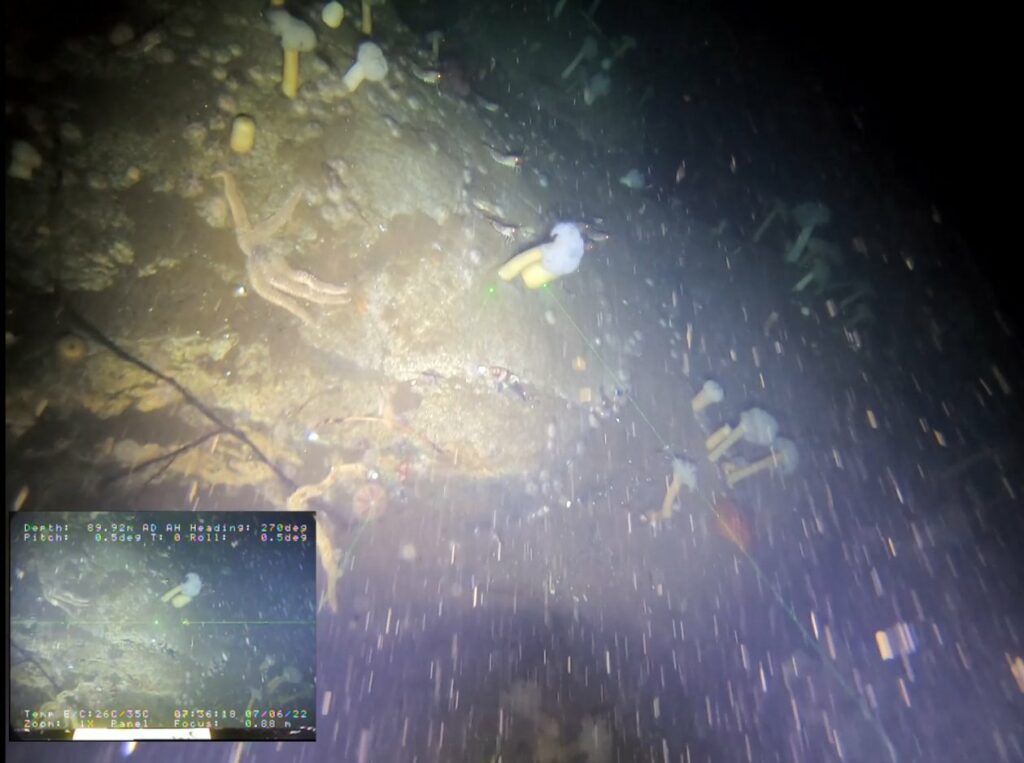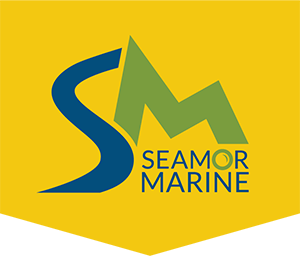SUPPORTING ENVIRONMENTAL SUSTAINABILITY IN AQUACULTURE

Situation
Finfish aquaculture and its impact on the environment has been a seismic issue for BC’s marine industry in recent years. Protecting our oceans is both a national and international priority – industry and government now work together to ensure the sustainability of this important sector of BC’s recovering economy. The Aquaculture Activities Regulation (AAR) requires BC fish farms to conduct benthic surveys at peak biomass to ensure long term sustainability.
Problem
Conducting these benthic surveys in hard bottom locations is difficult as aquaculture facilities in British Columbia are typically located in water that ranges between 40m and 300m in depth. Human divers can spend only minutes at the shallowest of these depths and require hours of recovery in decompression tanks afterwards.
For standard hard bottom benthic surveys, video of the ocean floor is collected from the edge of the containment array outwards to a distance of at least 152m from the facility or until the indicator species Beggiatoa and OPCs are no longer observed. Video is captured on at least 2 transects: one in each of the dominant and subdominant current directions.
Baseline surveys for amendments to these sites are far more intense and grueling, requiring video transects to be spaced every 100 meters both perpendicular and parallel to the coast across the entire aquaculture tenure area. Add to this challenge, collecting video to identify organisms as small as one centimeter over diverse substrates that may range from sand to mud to cobbled stone to bedrock at depths of up to 300 meters.
Furthermore, the frequency of sampling needs to be limited. Benthic surveys are expensive for industry stakeholders and extensive sampling activity can disturb the marine ecosystem around the aquaculture site. The scope of the challenge is then to create minimal impact, high efficiency testing that will ensure fish farms meet AAR standards so that they can continue to operate at maximum productivity, while maintaining long term environmental sustainability.
Solution
Mainstream Biological Consulting uses the SEAMOR ROV to efficiently collect the required video footage for benthic surveys while limiting the environmental impact and minimizing the risk to human life. The SEAMOR ROV offers an optimal combination of rugged durability, thruster power, and compact portability.
“There are other smaller, cheaper systems that are used in aquaculture, but they can’t do what we do,” says Lance Stewardson, Mainstream’s co-founder. “They can’t fly in the conditions we fly in.” Tidal timing becomes an important factor when divers or less robust ROVs are involved, but Stewardson and his team need not wait for a slack tide to complete their surveys. SEAMOR’s compact design makes it convenient to transport to remote sites by boat or by flying the entire system into a remote site via float plane.
The environmental challenges that Stewardson and his team face during surveys require adaptability, and that extends to the design of the SEAMOR ROV. Stewardson pairs the SEAMOR’s built-in camera with a GoPro to provide higher resolution video and integrates third party instruments such as the LinkQuest TrackLink USBL tracking system for additional geolocation data, thus highlighting the intentional modularity and intercompatibility of the ROV’s design.
However, the true strength of the SEAMOR ROV, according to Stewardson, is the responsive team at SEAMOR, who provide timely support to keep him and his team at Mainstream Biological Consulting flying year-round with minimal delay.
Results
Mainstream Biological’s strategic use of the SEAMOR ROV is a glimpse into the future of aquaculture monitoring through benthic surveys. It provides not only critical data in a safe and reliable manner with minimal risk to human life but is also a key tool in building projection models that help them understand the long term impact of fish farms on our coastal marine ecosystems. These statistical models reduce the need to test as frequently, thus minimizing the cost to industry stakeholders, ensuring compliance to AAR environmental regulations, and optimizing production plans for BC’s major aquaculture operations.
